Review of Book 200 Women Who Will Change the Way You See the World

If you lot've ever taken an art history form or spent time in a fine arts museum, chances are you know a lot about the men who "divers" their mediums. Every bit with other subjects, most of what nosotros learn virtually art history today withal centers on white men from Europe and, later, the United States. In reality, there are and then many more artists of all genders to acquire from and appreciate.
Here, nosotros're specifically taking a expect at just some of the women who have had lasting impacts on their art forms. From some of the art world'due south most iconic pioneers to its most unsung heroes, these women artists all had a paw — and, in some cases, still have a hand — in irresolute the world of fine art and how we ascertain it.
Laura Wheeler Waring

Laura Wheeler Waring was an artist and educator who taught at Cheyney University in Pennsylvania for more than 30 years. After studying the work of painters similar Cézanne and Monet while away, she returned to the United States, becoming best known for her portraits of prominent Blackness Americans, many of which were painted during the Harlem Renaissance.
Cindy Sherman

Photographer Cindy Sherman was part of the Pictures Generation during the 1980s, and is perhaps about well known for her series of Untitled Motion picture Stills (1977–fourscore) — self-portraits in which Sherman "posed in the guises of various generic female pic characters, among them, ingénue, working girl, vamp, and lonely housewife" (via MoMA). In this serial, and those that followed, Sherman used photography to question the media's influence over our individual and commonage identities.
Yoko Ono

Yous might offset recall of Yoko Ono as a musician and activist, but she's also an accomplished performance and conceptual creative person. Ono was considered a pioneer in the functioning art movement, earning the nickname the "High Priestess of the Happening".
One of her most revered works, Cut Piece, was a performance she showtime staged in Japan; Ono sat on stage in a nice suit and placed scissors in front of her, and, in an human activity of daring vulnerability, invited audience members to come on stage and cutting away pieces of her clothing. "Fine art is like breathing for me," Ono has said. "If I don't do it, I start to choke."
Betye Saar
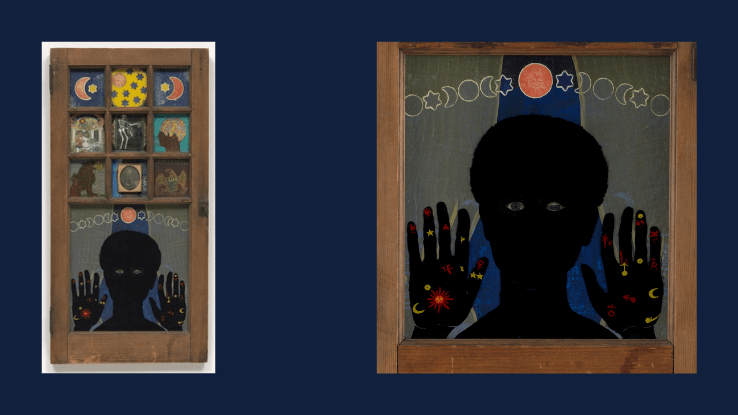
Before becoming a printmaker and activist, Betye Saar studied design and was employed equally a social worker. A printmaking elective inverse her entire career trajectory — and, in turn, part of the trajectory of art history.
Saar was part of the Blackness Arts Move in the 1970s and, through painting and aggregation, critiqued institutionalized racism and the racist stereotypes white people held toward Black Americans. "To me the play a trick on is to seduce the viewer," Saar has said. "If yous can become the viewer to expect at a piece of work of fine art, then you might be able to requite them some sort of message."
Frida Kahlo

It's rare to discover someone who hasn't at least heard of Frida Kahlo. A self-taught painter from Mexico, she is best known for exploring themes like decease and identity through her cocky-portraits. Kahlo ofttimes used bold, brilliant colors to create her symbol-rich works, and was regarded as one of the almost influential artists of the Surrealist movement.
Yayoi Kusama
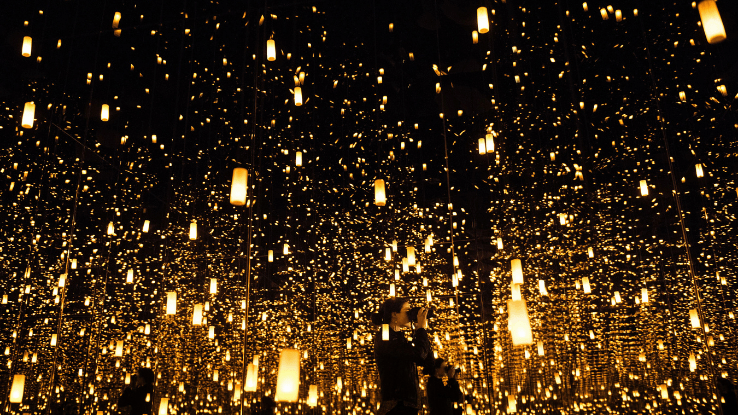
Yayoi Kusama started painting at a very young age, but she'south also known for her hyper-real sculptures, polka dots, installations, so much more. Like many of her peers, Kusama embraced the counterculture of the 1960s, employing nudity in much of her work. Today, she continues to create works for her enduring Mirror/Infinity rooms series, which apply mirrors and lit objects to create a sense of endlessness.
Amy Sherald

Amy Sherald is an American painter and portraitist who depicts Black Americans, often doing everyday activities — something that became more common in portraiture writ big in the mid-19th century. Odds are that you lot recognize Sherald's work — and her signature grayscale pare tones — as she was the starting time Black adult female to consummate a presidential portrait for the Smithsonian'due south National Portrait Gallery.
Georgia O'Keeffe

Known as the female parent of American modernism, you likely acquaintance Georgia O'Keeffe with her paintings of New United mexican states's landscapes, flowers, skulls, and, just perhaps, the skyscrapers of New York City. In the 1920s, she was the outset woman painter to gain the respect of the New York fine art earth, all by painting in her unique style.
Adrian Piper

Adrian Piper became a pioneering minimalist, feminist, and conceptual artist in 1970s New York City. She used her work to question society, identity, and racial politics by demanding the audience to confront truths about themselves. She frequently challenged people on the streets of New York to estimate her race, socio-economical class, and gender — all while dressed equally a Black human being with a imitation mustache and sunglasses, or while wearing compelling statements on her clothes.
Shirin Neshat
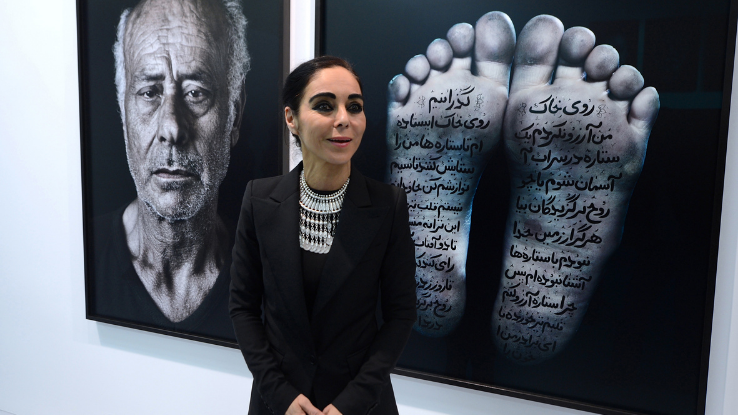
Shirin Neshat left Iran in 1974 to study art in Los Angeles, California — earlier the Iran Islamic Revolution took place. She is best known for her photography, film, and video work, much of which explores the human relationship betwixt Islam's cultural and religious systems and women. Moreover, Neshat's works ofttimes create a sense of solidarity and empowerment.
Jenny Holzer

Equally a neo-conceptual artist, Jenny Holzer's work focuses on words and ideas, which she puts on ad billboards, projects onto buildings and adds to electronic displays or neon signs.
These works brandish phrases that act as meditations on various concepts, such as trauma, knowledge, and hope. I of her more notable works, I Smell You On My Skin, makes the viewer question what kind of sentiment the sentence conveys.
Rebecca Belmore

Much of Rebecca Belmore's art addresses identity and history — and, in item, houselessness and the voicelessness of the Starting time Nations People in Canada. As an Anishinaabekwe artist, she works to heighten awareness around the prejudice, violence, and attempted erasure of Ethnic North American culture. In 2005, she was the first Indigenous woman to correspond Canada at the Venice Biennale.
Louise Bourgeois
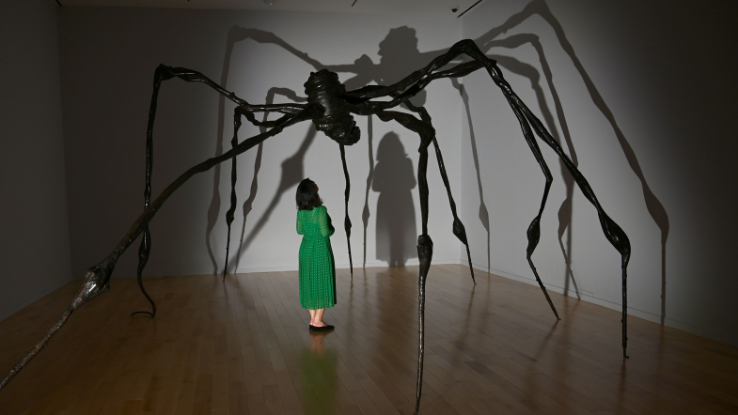
While a prolific printmaker and painter, Louise Conservative is better known for her installation fine art and sculptures — like the spider above — which were inspired past her own experiences and memories. Throughout her career, she created revolutionary works during a time when abstraction and conceptual art were the main styles shaping the art world.
Mickalene Thomas

Heavily influenced by popular culture and pop fine art, Mickalene Thomas often embellishes her paintings with rhinestones and uses colorful acrylic paints. In her work, Thomas centers Black American women, whom she believes embody power and femininity.
Judy Chicago

Judy Chicago was i of the major figures within the early Feminist Art move. Every bit exemplified in her iconic work The Dinner Party, her installation pieces often examine the part of women in history and civilisation — in the 1970s and earlier. While at California State University in Fresno, Chicago founded the first feminist art program in the Us.
Augusta Vicious

Augusta Fell was an American sculptor during the Harlem Renaissance who worked toward securing equal rights for Black Americans in the arts. In add-on to creating breathtaking sculptures, often of Black folks, Savage founded the Brutal Studio of Arts and Crafts in Harlem in 1932, and, a few years subsequently, she became the showtime Black American elected to the National Association of Women Painters and Sculptors in 1934.
Carolee Schneemann

Known for her provocative performance art practices, Carolee Schneemann is considered the progenitor of "torso fine art". (Just await up her most famous work, Interior Curlicue, and you'll see what we hateful.) She used her body to examine women'south sensuality and liberation from the oppressive aesthetic and social conventions established by our patriarchal society.
Nan Goldin

Famous for her in-the-moment photography, Nan Goldin'southward work challenges traditional ability relations. In addition to documenting New York Metropolis's queer subculture post-Stonewall, Goldin explored the HIV/AIDS crisis, opioid epidemic, and LGBTQ+ bodies.
Elaine Sturtevant

Does this await like an Andy Warhol to you lot? Well, that'southward the idea! Elaine Sturtevant, who went by her last name professionally, was a conceptual artist known for her inexact replicas — that is, non-quite-right copies of big-name artists' piece of work.
Some artists and critics encouraged her efforts, while others became quite angry. Nevertheless, Sturtevant used her works to explore the concepts of authorship, originality, and the structure of art civilisation.
Ruth Asawa
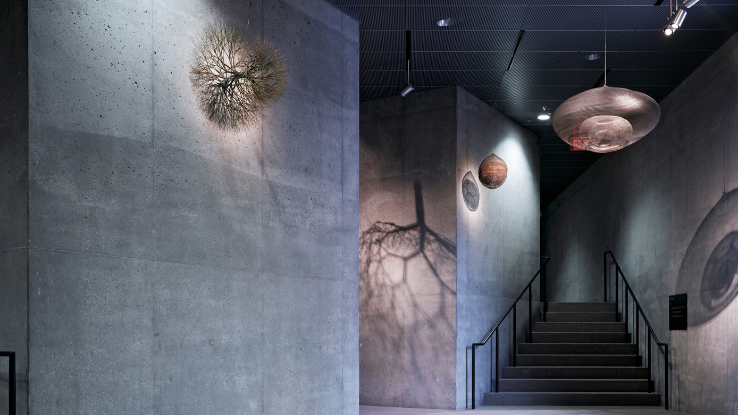
During the 1960s, Ruth Asawa created increasingly complex wire sculptures. A San Francisco-based artist, Asawa'southward last public committee was the Garden of Remembrance at San Francisco Land University, which was created to recognize Japanese Americans who were interned during World War II.
Catherine Opie
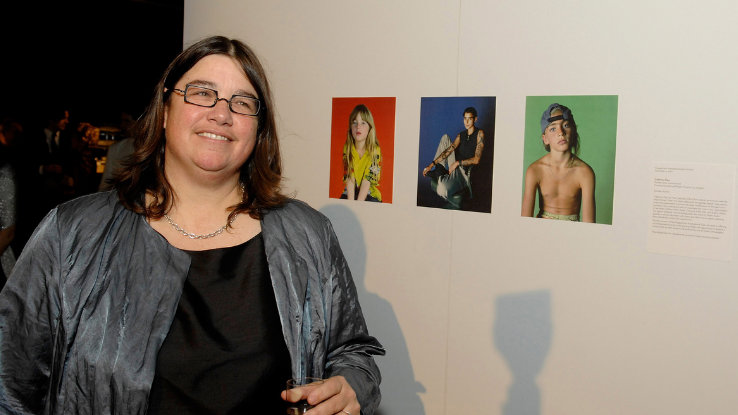
Known for her studio, portrait, and landscape photography, Catherine Opie has been a photographer since the age of 9. She uses her photography to examine social norms, and, in doing then, displays diverse subcultures in formal portraits — but in a way that conveys ability and respect by evoking traditional Renaissance portraiture.
micha cárdenas

micha cárdenas is an creative person, writer, theorist, and assistant professor who won an Impact Award at the Indiecade Festival in 2020 and the Creative Award from the Gender Justice League in 2016. She believes teaching is the path to liberation and uses VR and art to address global issues such every bit racism, gendered violence, and climate change.
Lee Krasner

Lee Krasner was an Abstract Expressionist painter who also specialized in collaging. Her works capture a spirit of relentless reinvention, from her Cubist drawings and assemblage to her portraits and murals for the Works Progress Administration (WPA).
Source: https://www.ask.com/culture/women-who-changed-world-of-fine-art?utm_content=params%3Ao%3D740004%26ad%3DdirN%26qo%3DserpIndex
0 Response to "Review of Book 200 Women Who Will Change the Way You See the World"
Post a Comment